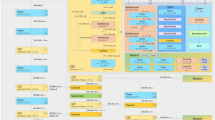Abstract
Background
The widespread popularity of browlifts and blepharoplasties speaks directly to the importance that patients place on the periorbital region of the face. In literature, most esthetic outcomes are based on instinctive analysis of the esthetic surgeon, rather than on patient assessments, public opinions, or other objective means. We employed an artificial intelligence system to objectively measure the impact of brow lifts and associated rejuvenation procedures on the appearance of emotion while the patient is in repose.
Methods
We retrospectively identified all patients who underwent bilateral brow lift for visual field obstruction between 2006 and 2019. Images were analyzed using a commercially available facial expression recognition software package (FaceReader™, Noldus Information Technology BV, Wageningen, Netherlands). The data generated reflected the proportion of each emotion expressed for any given facial movement and the action units associated.
Results
A total of 52 cases were identified after exclusion. Pre-operatively, the angry, happy, sad, scared, and surprised emotion were detected on average of 13.06%, 1.68%, 13.06%, 3.53%, and 0.97% among all the patients, respectively. Post-operatively, the angry emotion average decreased to 5.42% (p=0.009). The happy emotion increased to 9.35% (p=0.0013), while the sad emotion decreased to 5.42%. The scared emotion remained relatively the same at 3.4%, and the surprised emotion increased to 2.01%; however, these were not statistically significant.
Conclusion
This study proposes a paradigm shift in the clinical evaluation of brow lift and other facial esthetic surgery, implementing an existing facial emotion recognition system to quantify changes in expression associated with facial surgery.
Level of Evidence IV
This journal requires that authors assign a level of evidence to each article. For a full description of these Evidence-Based Medicine ratings, please refer to the Table of Contents or the online Instructions to Authors www.springer.com/00266.



Similar content being viewed by others
Reference
Ching S, Thoma A, McCabe RE, Antony MM (2003) Measuring outcomes in aesthetic surgery: a comprehensive review of the literature. Plast Reconstr Surg 111(1):469–480 (discussion 481-462)
Panella NJ, Wallin JL, Goldman ND (2013) Patient outcomes, satisfaction, and improvement in headaches after endoscopic brow-lift. JAMA Facial Plast Surg 15(4):263–267
Olson JJ (2007) Balanced botox chemodenervation of the upper face: symmetry in motion. Semin Plast Surg 21(1):47–53
Buck R (1988) Human motivation and emotion. John Wiley & Sons, Hoboken
Ekman P, Friesen W (1978) Facial action coding system: a technique for the measurement of facial movement. Consulting Psychologists Press, Palo Alto
Lyon DB (2010) Upper blepharoplasty and brow lift: state of the art. Mo Med 107(6):383–390
van der Schalk J, Hawk ST, Fischer AH, Doosje B (2011) Moving faces, looking places: validation of the Amsterdam dynamic facial expression set (ADFES). Emotion 11(4):907–920
Bishop CM (1995) Neural networks for pattern recognition. Oxford University Press Inc, England
Cootes TF, Edwards GJ, Taylor CJ (2001) Active appearance models. IEEE Trans Pattern Anal Mach Intell 23(6):681–685
Reilly MJ, Tomsic JA, Fernandez SJ, Davison SP (2015) Effect of facial rejuvenation surgery on perceived attractiveness, femininity, and personality. JAMA Facial Plast Surg. 17(3):202–207
Chauhan N, Warner JP, Adamson PA (2012) Perceived age change after aesthetic facial surgical procedures quantifying outcomes of aging face surgery. Arch Facial Plast Surg 14(4):258–262
Boonipat T, Abu-Ghname A, Charaffadine A, Fleming KD, Bite U, Stotland MA (2019) Objective outcomes in upper Blepharoplasty. Plast Reconstruc–Surg Glob Open 7(8S–1):137–138
Asaad M, Dey JK, Al-Mouakeh A et al (2020) Eye-tracking technology in plastic and reconstructive surgery: a systematic review. Aesthet Surg J 40(9):1022–1034
Cast AD, Burke PJ (2002) A theory of self-esteem*. Soc Forces 80(3):1041–1068
Michelle A, Harris UO (2019) The link between self-esteem and social relationships: a meta-analysis of longitudinal studies. J Personal Soc Psychol 119(6):1459–1477
Scherer KPE (1982) Handbook of methods in nonverbal behavior research. Cambridge Univ Press, Cambridge
Skiendziel T, Rösch AG, Schultheiss OC (2019) Assessing the convergent validity between the automated emotion recognition software Noldus FaceReader 7 and facial action coding system scoring. Plos One 14(10):e0223905
Baker SB, Dayan JH, Crane A, Kim S (2007) The influence of brow shape on the perception of facial form and brow aesthetics. Plast Reconstr Surg 119(7):2240–2247
Nahai F (2005) The art of aesthetic surgery: principles and techniques, 2nd edn. Quality Medical Publishing, St. Louis
Bartlett MS, Viola PA, Sejnowski TJ et al (1996) Classifying facial action. In: Advances in neural information processing systems 8. MIT Press, Cambridge, MA, pp 823–829
Ekman P, Friesen WV (1976) Measuring facial movement. Environ psychol Nonverbal Behav 1(1):56–75
Funding
No funding.
Author information
Authors and Affiliations
Corresponding author
Ethics declarations
Conflict of interest
The authors declare that they have no conflicts of interests to disclose. This study was approved by the institutional review board (IRB)
Informed Consent
Informed consent was obtained from all participants
Additional information
Publisher's Note
Springer Nature remains neutral with regard to jurisdictional claims in published maps and institutional affiliations.
Supplementary Information
Below is the link to the electronic supplementary material.
S1a.
Emotional expressions (as percentages) of patients in repose pre- and post-operatively without filtering out other concurrent facial surgical procedures such as canthopexies, facelifts, lower eyelid blepharoplasties, and fat grafting to the face. Comparing that with the results after filtering out these procedures (PNG 70 KB)
S1b.
we note that the overall trends remain the same (PNG 88 KB)
Rights and permissions
About this article
Cite this article
Boonipat, T., Lin, J. & Bite, U. Detection of Baseline Emotion in Brow Lift Patients Using Artificial Intelligence. Aesth Plast Surg 45, 2742–2748 (2021). https://doi.org/10.1007/s00266-021-02430-0
Received:
Accepted:
Published:
Issue Date:
DOI: https://doi.org/10.1007/s00266-021-02430-0




